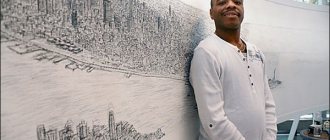Neurologists point out that hemiplegia is a condition in which a person is unable to make voluntary movements in one part of the body due to a failure in the conduction of nerve impulses along the fiber. This disorder occurs for various reasons - from infectious lesions to injuries and neoplasms. Therefore, treatment tactics in each situation will be selected by the doctor individually. If a person seeks medical help in a timely manner, the pathology can be dealt with in a short time.
What is hemiplegia
Anatomically, hemiplegia is a partial limitation of the functioning of the nervous regulation of muscle fibers. In this case, doctors talk about pyramidal insufficiency - the impulse from the cells of the cerebral cortex does not fully reach the motor neurons in the anterior horns of the spinal cord. It is for this reason that a person partially loses the ability to voluntarily regulate his movements. The situation is reversible - recovery after appropriate treatment occurs quickly.
Whereas, what is hemiparesis, right-sided or left-sided damage is more severe damage to the nerve fiber. Physiological blockade and even destruction of motor neurons are practically impossible to correct. The muscles gradually completely atrophy and motor activity in the affected part of the body stops.
This is the difference and difference between hemiparesis and hemiplegia - the possibility of recovery. In addition, it is necessary to take into account that in the medulla oblongata the fibers of the pyramidal tract undergo partial decussation. Therefore, visible symptoms of a malfunction in the muscle fibers on the right imply a pathological focus on the left in the cerebral hemispheres. When consulting, specialists, explaining to a person right-sided hemiparesis what it is, point out similar nuances of their disease.
Pathogenesis of the disorder
The pyramidal tract itself originates from layer V of the cerebral cortex and is most clearly represented in the area of the precentral gyri.
The central neuron of the tract descends along the cerebral structures to the level of the medulla oblongata, where it makes the transition to the opposite side, then following in the lateral columns of the spinal cord to its anterior horns and meets the peripheral motor neuron.
For most muscles, the crossing of the corticospinal tract is incomplete, that is, part of the tract goes to the peripheral motor neurons of its side. This mechanism is a kind of protection of the muscles from the consequences of unilateral damage to the pyramidal tract.
In this case, the function of the damaged pyramidal tract on one side will be taken over by the opposite corticospinal tract.
However, there are muscles that are particularly vulnerable in this regard. For them, the pyramidal path makes a complete crossover. These are the muscles of the lower part of the facial muscles, the muscles of the tongue and the muscles of the upper and lower extremities.
Therefore, with unilateral pathology of cerebral structures, it is these muscles that suffer. With unilateral damage to the central neuron of the corticospinal tract before the decussation, the symptom of hemiplegia is formed on the opposite side, after the decussion - on the affected side.
Causes
Based on the characteristics of the appearance of muscle weakness - hemiplegia, neurologists classify it as a disease of a secondary nature, the causes of which must be sought in damage to the structures of the central nervous system.
The following factors can lead to the development of hemiaparesis:
- Cerebral or spinal strokes are the destruction of nerve cells due to rupture of blood vessels or blockage of their lumen by a thrombus or embolus. Directly depending on the location of the lesion, certain symptoms of a malfunction in the nerve conduction of impulses along the descending path will be observed. Doctors explain up to 2/3 of cases of hemiplegia by strokes.
- Traumatic brain damage to the tissues of the cerebral hemispheres - due to a direct blow to them, or indirectly, for example, in a car accident. In terms of severity, it can be a slight bruise or complete destruction of one of the areas of the brain - a person experiences partial impairment of movements or widespread paralysis.
- Destruction of nerve fiber sheaths due to autoimmune processes - Alzheimer's disease. Experts have not definitively established the reasons for the formation of such a disease, however, they point to a family predisposition.
- Neuroinfections are the penetration of pathogens of infectious diseases into the brain tissue from the outside, or from internal foci. Most often, doctors diagnose meningitis, neurosyphilis, encephalitis, and tuberculosis.
- Neoplasms - if after a stroke the tissues are compressed by hematomas, then with tumors the brain and nerve conduction suffer from rapidly growing additional formations. They can be either single or multiple.
Among additional factors provoking hemiplegia, neurologists point to the hysterical personality type of people and helminthic infestations. Sometimes pathology occurs due to intoxication and congenital defects of the nervous system.
Main types
Have you been trying to heal your JOINTS for many years?
Head of the Institute for the Treatment of Joints: “You will be amazed at how easy it is to cure your joints by taking the product for 147 rubles every day.
The disease can often be found among children as a consequence of cerebral palsy. In general, there are different types of the disease, occurring in both children and adults. Spastic hemiplegia is more likely to appear in pediatric patients. Adults are characterized by contralateral hemiplegia and alternating hemiplegia.
Our readers successfully use Sustalaif to treat joints. Seeing how popular this product is, we decided to bring it to your attention. Read more here...
Depending on the type, there are also organic and functional. The organic form is characteristic when blood circulation to the brain is disrupted. It is usually observed with thrombosis, cerebral hemorrhage, and is sometimes observed as a result of inflammatory diseases of the brain.
The organic form develops in connection with disturbances in the functioning of the central nervous system as a result of pathologies. In this case, there is a strong tension in the muscle fibers and tendons in the paralyzed limbs. The disease can be either right or left-sided, but sometimes double hemiplegia occurs, when motor dysfunction is observed on both sides. Sometimes the disease can manifest itself in the form of deterioration in the functioning of the facial muscles.
When the functional form of the disease appears, it is similar to the organic one in only one sign - paralysis of the limbs on one side, the remaining symptoms are completely different. Often this form goes unnoticed.
There is another form of the disease when paralysis occurs crosswise, for example, paralysis of the left arm when a lesion occurs develops on the opposite side. This form is called contralateral, and it is caused by multiple negative effects on the brain.
Alternating hemiplegia is rare and is more common among pediatric patients. Manifests itself spontaneously with random attacks of paralysis of the limbs. This condition can last from a few minutes to several days. With this form, complications such as impaired motor functions of the eyeballs, the occurrence of dystonia, and disruption of the functions responsible for the perception of information are possible.
Classification
In order to facilitate and speed up the diagnosis of hemiplegia, in international neurological practice it is customary to rely on the developed classification of the pathological disorder. Thus, according to the etiological factor, hemiparesis and hemiplegia can be organic - persistent cerebral disorders, as well as functional - they can disappear on their own, without treatment procedures.
Taking into account the localization of the pathological focus, it is customary to distinguish right-sided or left-sided hemiplegia, contralateral - the focus is located on the side opposite to the lesion, homolateral - on the same half of the body. Less commonly, double hemiplegia occurs - limbs are involved in the process on both sides at once.
According to the variant of the course of the disease, a cross arrangement should be distinguished - for example, right-sided hemiplegia of the arm, but the leg is affected on the left. In addition, the doctor indicates central or spinal spastic hemiparesis in the diagnosis. Whereas in terms of stages it can be progressive spastic hemiplegia, or regressive - the restoration of conduction along the nerve fiber has begun.
Based on the age of the patient, it is traditionally described as childhood hemiplegia or the disease developed in an adult. Of course, in children it is more difficult to diagnose and treat the disorder in a timely manner, since it is not always possible to establish its true cause. Meanwhile, previous complex therapy for right-sided/left-sided hemiparesis in children has a good prognosis for full recovery.
Etiology
The adverse factors that can lead to the development of such a disease are quite diverse. They are presented:
- cerebral or spinal strokes;
- traumatic brain injuries;
- spinal cord contusions;
- infectious damage to the central nervous system;
- extensive diffuse foci of ischemia;
- malignant or benign brain tumors;
- functional disorders, for example, hysterical neurosis;
- hemorrhages in the tissue of the spinal cord or brain;
- parasitic infestations;
- endogenous or exogenous intoxications;
- complicated labor – in this case the child is exposed to danger;
- blood pathologies;
- multiple sclerosis;
- alcohol or drug addiction;
- diseases of the cardiovascular system;
- diabetic encephalopathy;
- inflammatory damage to brain structures;
- cerebral palsy;
- arachnoiditis;
- meningitis.
In some cases, a child is already born with a similar disorder. Hemiplegia in children is a consequence of improper formation of central motor neurons during embryogenesis, as well as other disorders of cerebral or spinal functions during intrauterine development of the fetus.
Symptoms
Since hemiplegia is based on damage to the pyramidal tract of the nerve innervation of muscle fibers, its main clinical sign will be the absence of voluntary movements - usually on the opposite side, cross, or less often on the same side. The person is unable to follow the doctor’s command - raise an arm/leg, smile, turn around.
Other specific signs of hemiparesis are:
- hypertonicity - a sharp increase in muscle tone of the affected limb;
- enhanced tendon and periosteal reflexes, Babinsky, for example;
- simultaneous decrease in joint reflexes;
- formation of pathological reflexes in a paralyzed arm/leg.
Additionally, a person may have clinical signs of hemiparesis, such as distortion of facial expressions - against the background of hemiparesis, both the function of the hand and facial muscles suffers. Due to weakening of the nerves on the affected side, speech disturbance will occur - slurred, unclear, sluggish.
Additional symptoms of hemiparesis:
- cyanosis and coldness of the skin;
- difficulty moving, self-care;
- involuntary muscle contractions, cramps;
- discomfort in the parts of the body involved in the process;
- decreased superficial as well as deep sensitivity;
- intellectual childhood retardation.
With mild hemiplegia, the above symptoms disappear on their own. Whereas with moderate and severe stages of hemiparesis, mandatory comprehensive treatment is required.
Options for the development of the disorder
Depending on the location relative to the lesion, hemiplegia can be:
- contralateral, if it appears on the side opposite to the lesion (in case of cerebral pathology);
- homolateral, if the damage is on the same side as the affected limbs (in spinal processes);
- double, when the upper and lower limbs are involved on both sides at once. Double hemiplegia is the most severe form of cerebral palsy.
A separate form of contralateral hemiplegia is the alternating variant. They talk about it if on the side opposite to the affected limbs, there are other neurological symptoms that can be explained by the same lesion that led to the development of the disorder.
- Weber's syndrome. In the cerebral peduncles, the pyramidal tract runs in close proximity to the nucleus of the gasomotor nerve. With a pathological process localized in this area, symptoms of damage to the third cranial nerve will appear on the affected side (ptosis, divergent strabismus, mydriasis, diplopia, limited upward, downward and inward mobility of the eyeball, pathology of accommodation), and central hemiplegia will form on the opposite side .
- Millard-Gubler syndrome. If hemiplegia is detected on one side and peripheral paresis of the facial nerve on the opposite side, it is worth looking for the lesion in the pons, since there the corticospinal tract runs next to the nucleus of the VII nerve.
- Foville syndrome occurs if peripheral paresis of the abducens nerve is added to the clinical picture of Millard-Gubler syndrome. In this case, the lesion should also be assumed to be in the pons, but think about a more extensive process than in the alternating syndrome involving only the nucleus of the facial nerve.
- Jackson syndrome. The nucleus of the hypoglossal nerve, which provides movement of the tongue muscles, is located in the medulla oblongata. When it is destroyed together with the pyramidal tract, this alternating syndrome occurs, manifested by peripheral paresis of the tongue muscles from the pathology and contralateral hemiplegia.
Diagnostics
Neurologists, as a rule, do not have any difficulties in establishing the diagnosis of hemiplegia - it is enough to conduct a thorough examination of the patient. However, for differential diagnosis and identification of the true cause of the disorder, it will be necessary to conduct many instrumental and laboratory studies:
- blood tests - general, biochemical;
- computed tomography/magnetic resonance imaging – will exclude space-occupying lesions and strokes;
- electromyography - especially the motor area of the cerebral cortex;
- lumbar puncture – allows you to identify various neuroinfections;
- tumor markers – early diagnosis of cancer;
- assessment of hormonal levels - pathologies of the thyroid gland, adrenal glands, as provocateurs of disruption of nervous activity.
Only after comparing the information from the above diagnostic procedures with complaints, anamnesis - when unpleasant sensations arose, their intensity, localization, a neurologist will be able to make the correct diagnosis of hemiparesis and select the appropriate therapy.
Treatment tactics
The main emphasis in the treatment of hemiplegia, of course, falls on the elimination of the provoking factor that formed the basis of the disorder. Thus, in the case of a stroke, the administration of neuroprotectors and vasoactive drugs, subgroup B vitamins is justified. Whereas a tumor disease of the brain requires surgical intervention followed by early rehabilitation.
Among the medications in demand for hemiparesis:
- drugs to improve nerve conduction;
- muscle relaxants;
- antioxidants;
- analgesics;
- vitamins;
- cholinesterase inhibitors.
Massage and therapeutic exercises, as well as various physiotherapy techniques, for example, electrical stimulation of muscle fiber, magnetic therapy, barotherapy, or laser therapy, have a direct effect on muscle groups affected by hemiparesis. The use of standers is effective - special devices that allow a person with hemiparesis to assume a vertical position.
Among alternative medicines, acupuncture and manual therapy have proven themselves to be excellent for hemiparesis. Traditional medicine recipes - decoctions and infusions of herbs, rubbing with ointments from extracts of medicinal plants can complement the main therapy, but should not replace them.
Another mandatory component of the treatment of hemiparesis is psychotherapy and social adaptation. A person is helped to restore himself in the professional sphere, undergo retraining to get a job, or he is assigned a disability group with the provision of social and everyday support.
Consequences and complications
It is not always possible to eliminate hemiparesis completely. So, due to a severe injury, the consequence will be a permanent impairment of the movements of the arms and legs - on one or both sides. The prognosis directly depends on the area of damage to brain structures, the timeliness of complex treatment and the initial state of human health.
If the decrease in muscle strength is reversible, then complete restoration of motor activity and a return to normal life is possible. In 1/3 of cases of hemiparesis, this requires long-term comprehensive rehabilitation - courses in specially equipped centers, where specialists purposefully influence the nervous system. However, sometimes it is not possible to cope with hemiplegia - it transforms into persistent hemiparesis, especially in the cross-sectional form of the disease. A person becomes deeply disabled and requires constant outside care.
Nevertheless, hemiplegia can and should be fought. For this purpose, specialists are developing new programs, inventing modern medicines and physical procedures. With the right goal setting, you can always achieve the desired result.








